
 Milan Weather Forecast Milan Weather Forecast
 Guided Tours
Guided Tours
 Service Evaluation
Service Evaluation
 Museum Information Museum Information
 Exhibitions Exhibitions
 Entertainment Entertainment
 Restaurants Restaurants
 Train Schedule
Train Schedule
 Road Maps
Road Maps
 La Scala Tickets La Scala Tickets
 Last Supper Tickets Last Supper Tickets
 The Brera Gallery Tickets The Brera Gallery Tickets
 Palazzo Reale Tickets Palazzo Reale Tickets
 Map of Milan Map of Milan
 Site Map Site Map
 About Us About Us
 Legal Notices Legal Notices
 Regulations Regulations
|
Welcome to Milan, or Milano as the Italians say.
We are Vittorio and Simona, your guides, and
we will show you the most beautiful places in Milan.
First a bit of history to bring you up to speed. The history of Milan starts more than 28 centuries ago. At that time, you would find here
a village inhabited by Ligurians. They were a warlike people to be sure, but they were not strong enough to resist the conquest by the
even fiercer Gauls (coming from what now is France), who gave it the name Mediolanum. Fast forwarding, we reach 220 BC when
Milan becomes an integral part of the Roman Empire. During the 500 years of Roman rule, Milan flourished and became the most
important trade, cultural, and religious center of Northern Italy. After Emperor Constantine's Edict in 313 AD Milan became
a leading religious centre of Northern Italy. Saint Ambrogio became the first great figure in Milan's history. Bishop Ambrogio,
Doctor of the Church, founder of the fourth basilicas ( San Simpliciano, San Ambrogio, San Lorenzo and San Nazzaro)
leading opponent of the Arian heresy, became Saint patron of Milan. San Ambrogio was a first in the long list of bishops who run the
city's affairs.
After the fall of the Roman Empire, the rich and beautiful city become
a target of Burgundians, and later of Lombards. The Lombard era (between 569-824) is regarded as a one of the most
peaceful periods in the history of Milan. The greatest figure of that time was queen Teodolinda, the wife of king of Longobards Authari,
who strengthened and preserved the christianity in this part of the country. During the Middle Ages Milan was governed by
the number of bishops who gradually during the invasion of the Emperor Frederick Barbarossa ended with the the siege of Milan in 1162 lost
their power to the feudal Visconti and Sforza noble families. These transformed Milan into a prosperous center of intellectual and
artistic life. Under the artistic and cultural patronat of Visconties and Sforzas Milan summoned the leading artists and architects
of the time including such celebrities as the painter Giotto (Giotto di Bondone) and the architect Donato Bramante.
Unique and overwhelming architectural highlights such as the Castello Sforzesco and the Cathedral or "Duomo"
were constructed under their reign (of course a guided tour is devoted to each of them!). This was also the era of the
painter, scientist, sculptor and engineer Leonardo da Vinci, a superstar the like of which the world has never seen since.
In Milan Leonardo da Vinci spent more than half of his artistic life, creating here his the most famous masterpiece "The Last Supper"
and his most known portraits: "A Lady with Ermine" (now in Czartoryski Museum, Krakow, Poland) and Portrait of Lucrezia
Crivelli (now in Louvre, Paris, France).
More than
200 years of prosperous rules of Visconti and Sforza rule ended when Milan was conquered by France in 1500. read more
Are you ready to start your tour?
Our guided tours through highlights of Milan
To learn more about a tour click the image
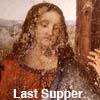
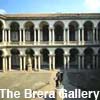
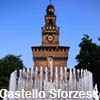
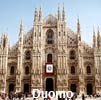
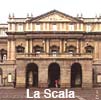
|


 Milan Weather Forecast
Milan Weather Forecast
 Guided Tours
Guided Tours
 Service Evaluation
Service Evaluation
 Museum Information
Museum Information
 Exhibitions
Exhibitions
 Entertainment
Entertainment
 Restaurants
Restaurants
 Train Schedule
Train Schedule
 Road Maps
Road Maps
 La Scala Tickets
La Scala Tickets
 Last Supper Tickets
Last Supper Tickets
 The Brera Gallery Tickets
The Brera Gallery Tickets
 Palazzo Reale Tickets
Palazzo Reale Tickets
 Map of Milan
Map of Milan
 Site Map
Site Map
 About Us
About Us
 Legal Notices
Legal Notices
 Regulations
Regulations





